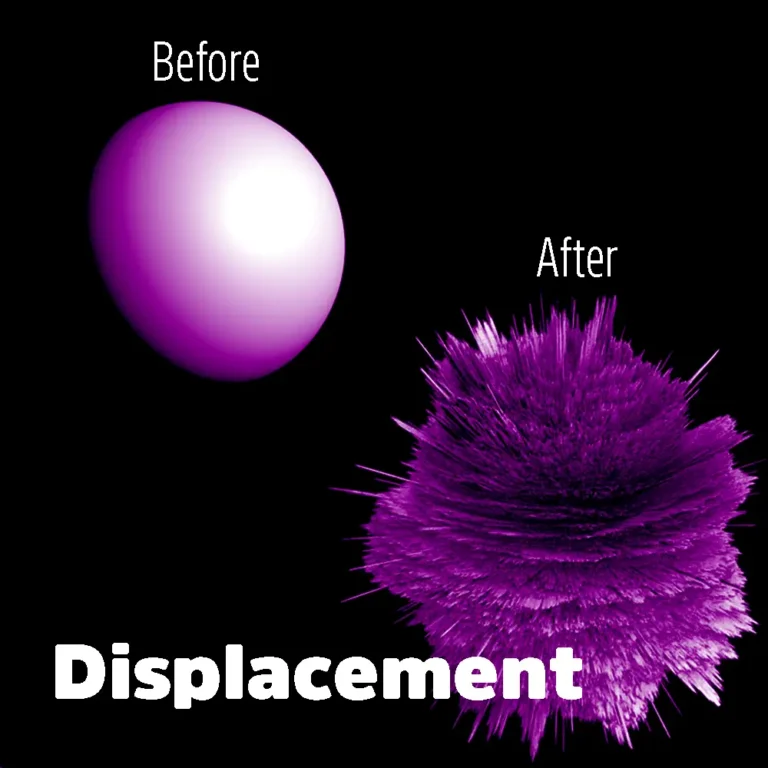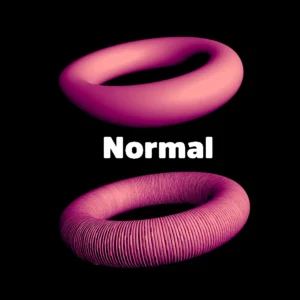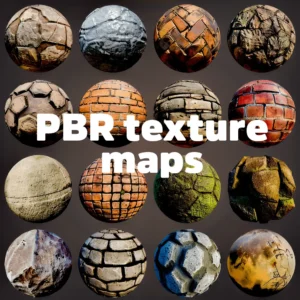All detail maps are divided into 4 types: displacement, vector displacement, bump and normal. They function based on two principles. Displacement and vector displacement maps change the geometry of the model, adding relief and details. Bump and normal maps, on the other hand, fake details by shifting normals, thus affecting the light that falls on the surface of a model but not its geometry.
Displacement maps:
A displacement map is a black-and-white texture, a variation of which represents a value between 0 and 255 for each pixel. Such values are also the height of each point over the surface of the object. Heights can be zero (where points remain where they are), positive (where points are pushed out), or negative (where points are pushed in).
Displacing renders will create the detail of the model. The first thing is tessellation where each polygon divides into 4 equals and again and again as per subdivisions specified. Thereafter, the render engine gives extrusion or requires indents on the polygons according to pixel values from the displacement texture.
Displacement is primarily known for its complex rendering process keeping the number of polygons in the scene unchanging. It can also use subsurface light scattering (SSS) effects like that of leather, milk, and wax. SSS works on polygon distances, thereby providing realistic results from displacement.
Displacement occurs only one axis in a displacement map, which is along the polygons’ normals (perpendicular to them). But, problems may occur if any part of the model should move to the sides instead of simply going up. In such a case, a vector displacement map is needed.
Vector displacement:
Vector displacement is similar to displacement but does allow moving itself along all three axes. Thus, something like mushrooms will be able to bake into a texture instead of keeping a part of their low poly. Even with great strength and a lot of experimental possibilities, vector displacements are rarely found in production due to their highly demanding computing power. In most cases, similar results can be achieved with less intense methods.
In summary, detail maps such as displacement and vector displacement play quite an important role in improving 3D modeling by adding depth and volume. All displacement maps alter geometry with the ability to keep the number of polygons constant and yet add textural detail. Even more useful is vector displacement, which offers additional flexibility but greater computational demands. These maps will continue evolving along with rendering technology, promising further realism and detail in 3D rendering.
Delve Deeper into Rendering: Learn more About texture maps!
Detailed texture maps, particularly bump and normal maps, play a crucial…


